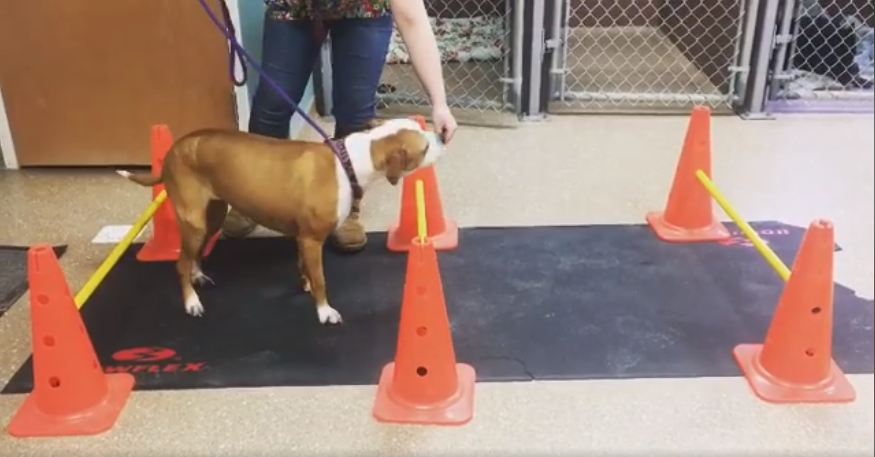|
Physical Rehabilitation
At Southtown Veterinary Hospital in Montrose, PA Physical Rehabilitation for Pets begin as soon as possible after injury or surgery. Ice packing and therapy laser treatments can start immediately, and range of motion exercises or massage shortly thereafter.
Signs a dog may need care may be subtle- slowing down, less enthusiasm to perform tasks, difficulty with turns or obstacles, not sitting squarely, or slowness getting up are all early signs of problems. Dramatic signs would be non-weight-bearing lameness, paralysis or severe pain. A pet with any of these signs may need rehabilitation. Although cats would benefit from rehab just as other patients would, they are more difficult to work with in this setting. For quiet cats that will tolerate the poking and prodding of equipment used for rehab, rehabilitation may be possible.
The veterinarian performing canine rehabilitation is at a disadvantage over his or her human physical therapist counterpart for several reasons. The most obvious is that our patients can't talk or tell us where it hurts. They also don't understand what to do or not to do, so we may need to be very clever to get the patient to perform certain movements or exercises, to take it easy for a few weeks, or even to get the pet to hold still during treatments!
There are also big differences in conformation - for example, the injuries a racing greyhound might get would probably be very different form those of a bulldog, and many breeds are prone to specific orthopedic problems - hip dysplasia in large breed dogs, luxating kneecaps in toy breeds, disc disease in dachshunds, for example. The sloping back of a German Shepherd predisposes to hip problems while the straight up and down knees of the Chow Chow make them much more prone to knee ligament tears. Veterinarians performing rehab on pets need to know and understand many variables between breeds and how certain activities, such as running in a harness pulling a sled, affect the body.
The first step in treating a problem is to get a thorough history - what signs does the owner or handler see, what activities can or can't the dog do, when do problems occur. Then a physical exam is done, including checking every bone, muscle and joint for pain, heat, swelling, spasm or atrophy. Each joint is put through its entire range of motion, which is measured and recorded. Muscle/limb girth is also measure. Gait analysis may be done, watching the dog at various speeds going straight, in circles, and up and downhill. Reflexes and nerve function are evaluated as well.
Rehabilitation can help:
- Post-operative orthopedics
- Tendon and ligament injuries
- Spinal Cord injuries
- Post-fractures
- Herniated discs
- Degenerative neurological problems
- Paralysis
- Arthritis
- Obesity and poor conditioning
- Muscular degeneration
- Inflammation and swelling

Check out our Facebook page for videos of puppies doing rehab!
Click here to see!
|